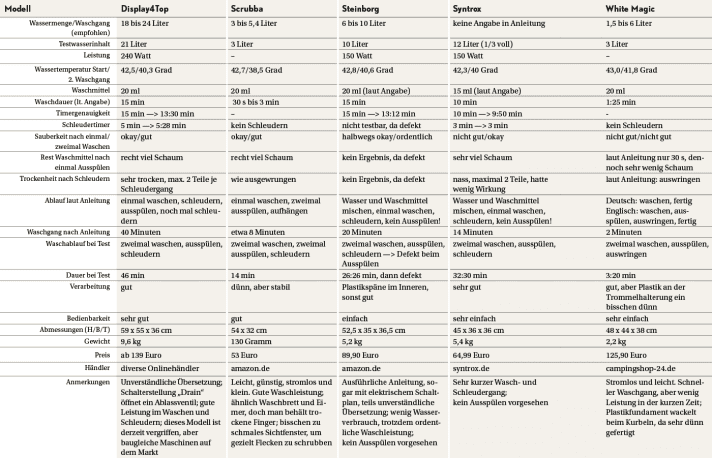Boat washing machines: 5 affordable models in a comparison test
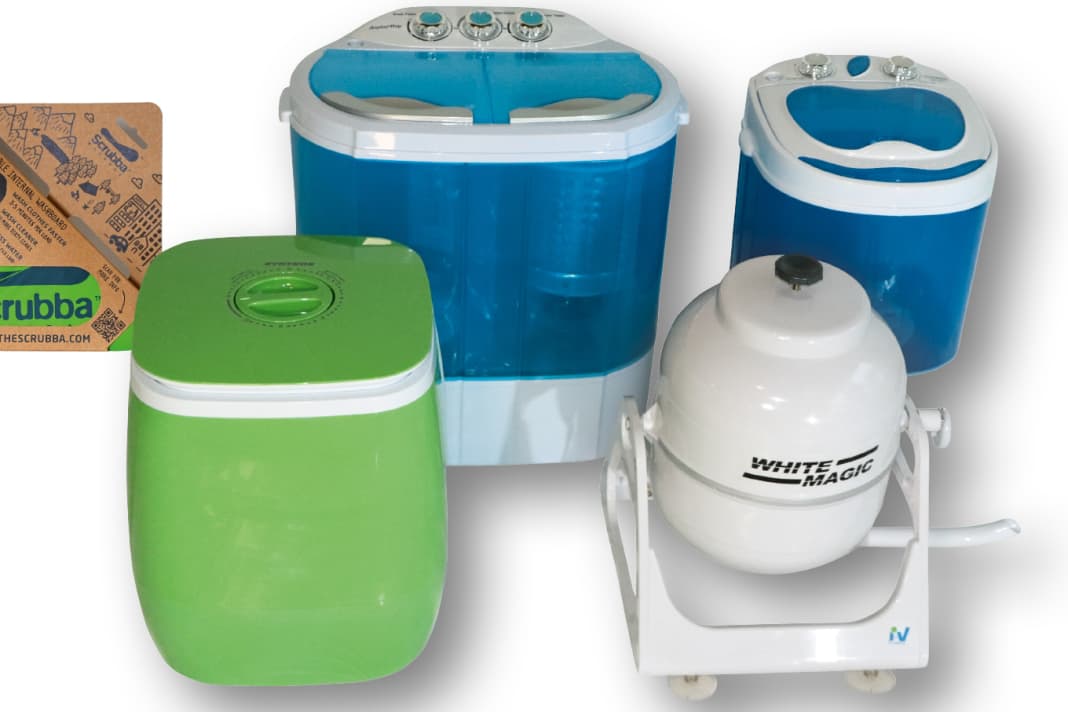





The jetty neighbour from the large Hallberg-Rassy invites you to a sundowner on the aft deck - but what should you wear? After two weeks of summer cruising, all the good shirts are long since sweaty, full of sun cream or red wine stains. Just when the summer holiday gets really relaxing, there is usually a low tide in the wardrobe. More and more harbours have washing machines and dryers, but when you need them, they are often occupied, broken or somehow disgusting. How practical it would be to be able to wash on board!
However, installing a fully-fledged washing machine on board for the occasional wash cycle would be overkill. Perhaps it would be enough instead to purchase one of the inexpensive mini washing machines advertised in camping accessories for the occasional wash cycle? We tested five solutions: three electric machines and two manual systems. Our initial research revealed that many of the washing machines offered on the Internet come from China and are either identical in construction and sold under several brand names or with a slightly different housing. For this reason, the Display4Top and Steinborg models listed here are representatives of the Chinese faction, whose prices and appearance may vary.
The electric mini washing machines have clear objectives: They should be small and light, consume little water and electricity and achieve results as quickly as possible. This makes them very interesting for the boat in terms of their specifications, because in a "laundry emergency" such as an upcoming sundowner, they can even be operated at anchor with a weak inverter without having to empty the water tank.
The washing machines in the washing test
But can the washing machines also achieve sufficient washing performance? For comparison, we washed six white T-shirts per model with the quantities of water and detergent specified in the instructions, one of which was always stained with the toughest and most common stains found on board: Engine oil, red wine, mustard and ketchup.
Even household washing machines have problems with the test stains from engine oil, red wine, mustard and ketchup
The design of most of the washing machines tested is very similar: warm water (40 degrees in the test) is filled into a kind of drum. This must first be heated on the cooker, as none of the washing machines presented here have a heating coil. The laundry and detergent are placed in the drum. At the bottom of the drum is a disc with slats, which rotates during washing and creates a considerable vortex in the drum.
The disc rotates clockwise for a few seconds, then counterclockwise. After the specified washing time (between 10 and 15 minutes, depending on the model), the washing machine stops and the water can be drained. This is done via a hose attached to the outside and at the very bottom for this purpose and by gravity. The hose, which does not have a valve (except for the Display4Top), must be laid horizontally on the floor. It therefore helps to place the machines in a shower tray for washing.
Only the Display4Top instructions advise rinsing the laundry in clean water in a second wash cycle. In practice, however, this is recommended for all models. As the final stage of the wash cycle, the clothes are briefly removed from the machine to attach a drum supplied to the slatted disc, in which they are then spun. In the Display4Top, the laundry is simply placed in the right-hand side of the two chambers. After the spin cycle (3 to 5 minutes), the textiles can be hung up to dry and the washing machines emptied.
None of the minis will completely remove the stains, but you can see which washing machine cleans deeper
The test stains are no easy task, even for a domestic washing machine and the standard 2.5-hour wash programmes. Within the washing time specified by the manufacturers of the camping washing machines (between 1:25 and 15 minutes, depending on the model), none of the mini machines will be able to completely remove the stains. However, the degree of cleaning of the stains in the test gives a good picture of how deep the cleaning of the T-shirts goes. These pictures can be found at the very end of the galleries of the individual products. Nevertheless, to give the washing machines in the test at least a chance, we have to double the washing time. Even a washing time of half an hour would be more than acceptable for the convenience of clean laundry on board. With these washing times (wash, rinse and spin) of between 26 and 46 minutes, the models deliver really acceptable results.
The washing machines in detail
DISPLAY4TOP
Two chambers. Convinces with good performance
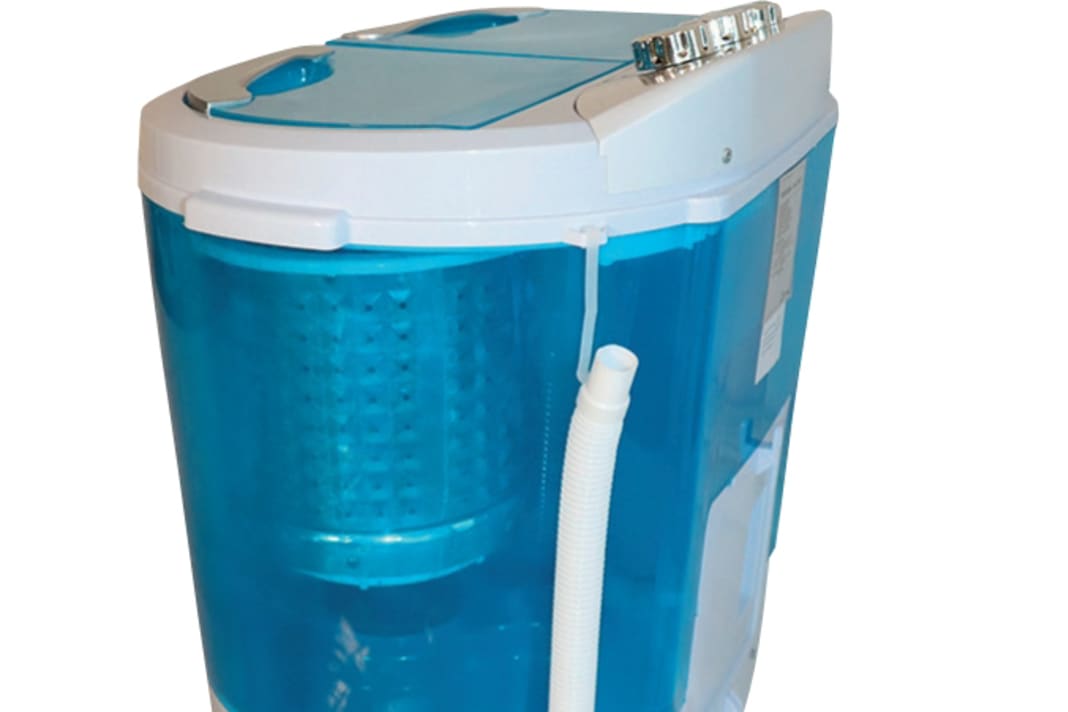





The Display4Top double-chamber washing machine delivered the best results of all the systems, with the most pleasing performance in both washing and spinning. Surprisingly, the washing result is even slightly better than that of a domestic washing machine (Grundig) in the short programme (37 minutes), which we used for direct comparison in the test. Although the Display4Top is also the bulkiest and heaviest model, weighing almost nine kilograms, and consumes the most water (21 litres), it is the best choice for anyone looking for a washing machine that can quickly get the ketchup stain from the previous evening out of a good shirt before an invitation to a sundowner.
Price: from 139 euros
Alternative: the double-chamber washing machine from Wiltec
SCRUBBA
A waterproof bag with glued-in dimpled sheet






If you don't have space on board for a washing device with the capacity of a cool box, we recommend the Scrubba. The concept is old and tried and tested, as it is basically a washboard in a bag like the ones you know from dinghy sailing. Instead of slats, a surface with three millimetre high studs is glued to one side of the bag. The Scrubba is filled with warm water and the textiles are placed inside together with detergent. The upper part of the bag is then folded over several times and secured in its rolled state with a catch. The air escapes through a valve and by squeezing the bag.
The duration of the wash cycle is given as three minutes, which we doubled to six minutes. To wash, simply run the flat of your hand over the bag and rub the soiled items of clothing over the nubs. The principle of a washboard, except that your fingers stay dry. The viewing window is large enough to see the laundry, but rubbing specific stains over the nubs is hardly possible with the narrow window. After double rinsing, however, the washing result is still good. A recommendation for small-cruiser sailors and anyone who wants to have a solution in their locker for sundowner emergencies - because with its dimensions of just 17 x 17 centimetres, the Scrubba fits into any storage compartment.
Price: 53 Euro >> available here
STEINBORG
Good performance, low water consumption. But it stops working when rinsing
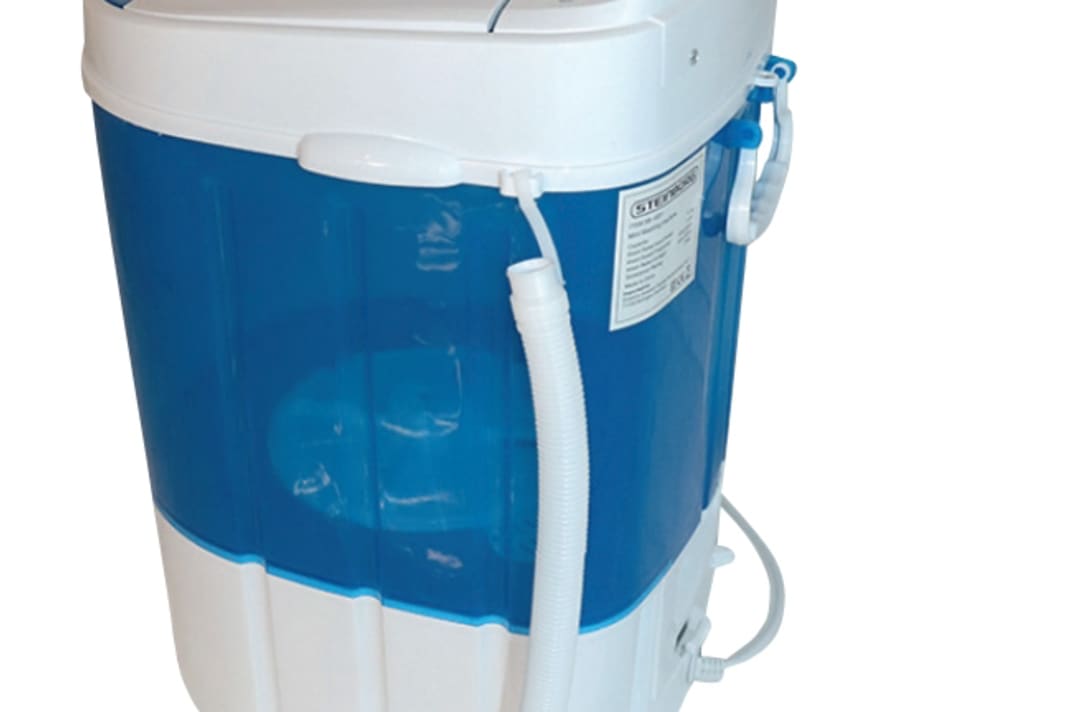





The Steinborg requires surprisingly little water (ten litres), but delivers a relatively good result. During the first wash cycle, however, we noticed that black dust was trickling out of the ventilation slots under the motor. A short time later, the 90 euro washing machine stopped working while rinsing the laundry, so we were unable to test the spin properties with the faulty appliance as planned.
SYNTROX
Chic look, satisfactory performance, lots of foam
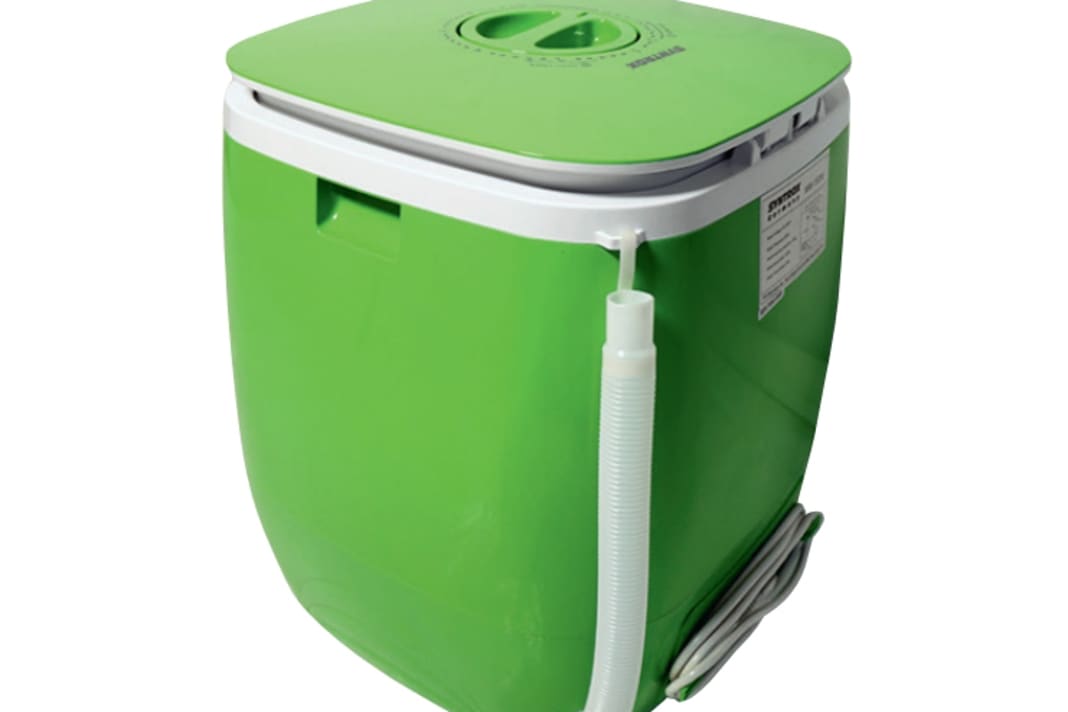





The Syntrox delivers a satisfactory result in the overall evaluation with two ten-minute washes. During the spin cycle, care must be taken to ensure that the items of clothing are exactly in the centre of gravity of the drum, otherwise it will develop a considerable imbalance. Despite the three-minute spin cycle, the laundry is still quite wet at the end.
Price: 64,99 Euro
WHITE MAGIC
Even in the event of a power failure: simple technology, short duration
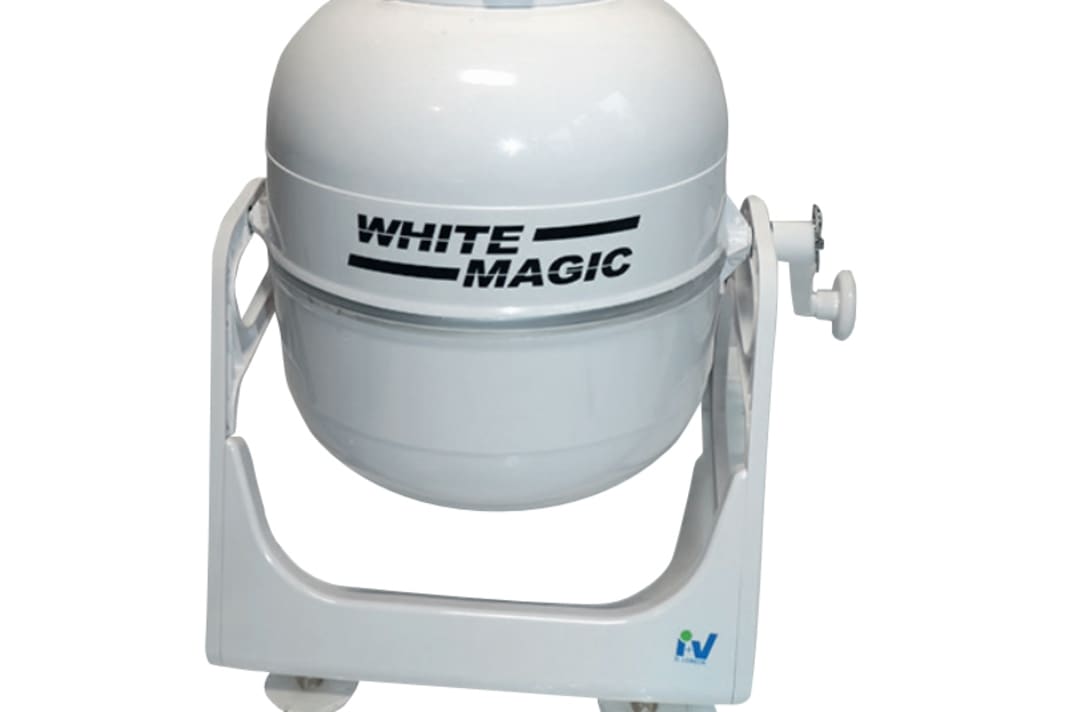





The "White Magic" manual washing drum is not very convincing, even with twice the washing time. However, the stated washing time of 1:25 minutes for one kilogramme of laundry is also very short and will only be sufficient for rinsing sweaty shirts at most. A significantly longer washing time would certainly benefit the result, but the effort involved in manual curing should not be underestimated and hardly anyone would enjoy washing after more than five minutes.
Price: 125,90 Euro >> available here
The data in comparison:
